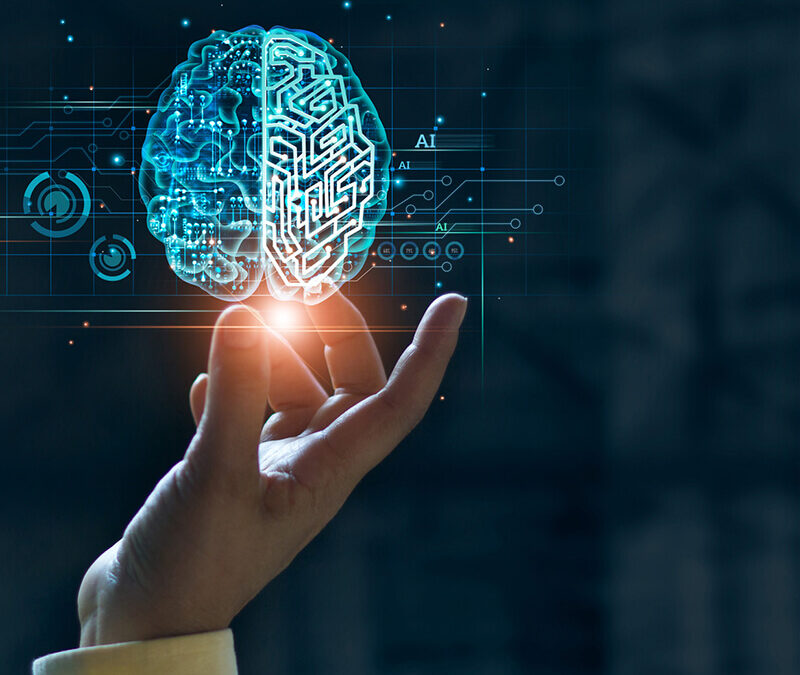The term “user experience design” was first used about 25 years ago, and since then UI/UX design has come a long way. Due to the increasing amount of websites and applications being built each day, the demand for good UI/UX designers has grown significantly. This high demand has pushed developers to experiment with some new technologies – like AI – to help satisfy the need for designers and thus, AI-driven design was born.
AI products are expanding quicker than we could have ever imagined. Artificial Intelligence has become a part of different industries – from spam filters to autopilots in airplanes – and it has proven its worth in every industry. AI surrounds us and impacts even the most unexpected areas of our lives. Remember those product recommendations that you’ve been seeing on Amazon? Yes, you’ve guessed it, that’s a machine recommending those items for you – how crazy is that?
“AI-driven design” or “Algorithm driven design” is becoming more and more popular as it has the potential to change the whole industry. Despite the numerous names, it means the same – non-human intelligence which is capable of generating creative results that seem genuine to the human eye.
“Surrounded by misconceptions and questions regarding its purpose and power, apart from its known ethical and philosophical challenges, AI can be the catalyst for great user experiences” – Joël van Bodegraven, Product Designer at Adyen.
In many cases, these AI-driven designs are outperforming or delivering designs that are way beyond any human brain could ever conceive. AI is bringing a huge change to the industry, and slowly but surely, it is revolutionizing UI/UX design as we know it.
As Artificial Intelligence is evolving, it’s opening doors for new opportunities – especially for people from the design realm.
What is the impact of AI on UI/UX design?
AI has a significant impact in real-life scenarios in the design world as well, but does that mean that it will replace the designers? No – at least not yet! For now, AI is expected to become an indispensable tool when it comes to UI/UX design.
AI-driven design is a new level of relationship between customer experience and AI. Machine learning plays a vital role as ML-based user experiences are opening up new doors for UI/UX designers. AI is challenging both technology and people – it promises to move UI/UX design to a new level of digital experience. Let’s have a look how:
- Thanks to the processing power of AI, designers are now capable of building custom interfaces to create unique user experiences based on the information present in the buyer’s profile.
- The improvement of Artificial intelligence has led to the development of tools that can help designers to create beautiful designs in lesser time. As AI analyses the data, it can easily pin-point what exactly the user is looking for and this way it can refine the design of future products/websites. AI can also help by suggesting completely new design alternatives and offer data on how they would improve user engagement.
- AI can also be used to create unique variations of landing pages and homepages for new sites
Examples of AI-driven design being used today:
Adobe Scene Stitch – every designer’s job involves tasks that are tiresome and boring. This is where Adobe’s AI-powered editor comes into play – it can identify a pattern in an image and assist designers in editing or patching patterns. This tool is complex because not only it can find an image which is an appropriate match to the one you’re editing, but it also discovers which pixels fit in the cut shape – and it can blend it into the existing photo to create a realistic new visual.
Another AI-powered tool is the Prisma app –it works on a technology that identifies the elements of a photograph and then decides what is the best visual effect that can be applied to it. This is done using image recognition technology.
Netflix – a company that has become synonymous with online movie streaming is using AI to predict user behavior and what kind of TV/Movie shows will keep them engaged. The entire user experience is adapted to each individual subscriber, with an ongoing personalization process called consumer science. 80% of the shows/movies a user watches on Netflix is generated by their recommendation system.
Another good example of how AI is shaping UI is Airbnb – their website/app uses a pricing tool that ensures that the prices are calculated on a demand-supply model. They also have an in-house AI system with machine learning that turns sketches of designs into source code – while it uses Machine Learning to translate ratings and reviews into the native language of the guests.
Final thoughts
AI integrations in UI/UX designs are still in their initial stage, a lot of changes are to be expected in the coming decade.
As AI advances, it will be replacing the human workforce bit by bit – there are some repetitive tasks in which machines already excel – e.g. assembly line work. But will they be replacing designers anytime soon?
The answer is no, at least not yet – humans have a unique ability to set the context of designs and to create empathy for the users – which machines can’t do for now.
AI can help us with repetitive tasks and free up time so that the designers can focus on the more strategic sides of the design. Without any doubt, we can say that AI and machine learning can help us design user experiences that are more personalized, relevant and efficient for people.
We should use these opportunities and work with technology – not against it.

